I have made code to read text (json, xml etc.) from a text file, and convert it into a strings which can then be used by other code to convert into plain old java objects or POJOS that are annotated by jackson.
I am not sure if my code handles the exceptions properly. So far, I have used the principles mentioned after my code (READ THIS DOWN VOTERS !!!), to develop the code. Note that I cannot use try with resources because I am stuck with Java 6 (even though my project JRE is 1.8).
package com.testing;
import java.io.BufferedReader;
import java.io.FileNotFoundException;
import java.io.FileReader;
import java.io.IOException;
public class JunkEx {
public static void main(String[] args) {
String filePath = ".\\src\\test\\resources\\text-files\\orders\\orders-2017.txt";
String contents = fileToString(filePath);
System.out.println(contents);
}
private static String fileToString(String filePath) {
StringBuilder stringBuilder = null;
BufferedReader br = null;
try {
br = new BufferedReader(new FileReader(filePath));
stringBuilder = new StringBuilder();
String currentLine;
while ((currentLine = br.readLine()) != null) {
stringBuilder.append(currentLine);
stringBuilder.append("\n");
}
}catch (FileNotFoundException ex1) {
ex1.printStackTrace();
}catch (IOException ex2) {
ex2.printStackTrace();
}finally {
try {
br.close();
} catch (IOException e) {
e.printStackTrace();
}
}
return stringBuilder.toString();
}
}
Principles:
1) Catch the most specific exception first, then the one above it in the exception hierarchy. I.e catch FileNotFoundException 1st and IOException later. Refer point 5 here
2) Do NOT return from inside a finally block, because finally is always executed as long as try "completes" fully or abruptly. Refer this SO answer.
3) Cleanup resources like buffered readers in the finally block. Refer point 1 here.
4) Do not make the callers of the "dangerous" method (i.e. which could throw exceptions), have to know/throw each of the exceptions inside it. I.e dangerous method should not "throws FileNotFoundException, IOException...etc". refer this link, specifically the last paragraph
Flaw in the code: If any of the first two catch blocks are executed, then its likely that the entire file was not read. But, my method will return a string anyway. The string could be null or incomplete.
Questions -
1) I want to throw an exception when the text file is not successfully converted to a string, i.e. one of the three catch blocks is executed. Should I wrap the exception in each catch block inside a generic Exception object and throw that or do something else ?
2) How can I improve/fix the exception handling of this code?
